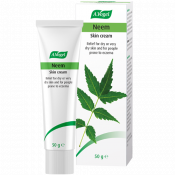An introduction to the symptoms of hives
Hives can come with an array of unpleasant symptoms, which may vary depending upon the severity of your outbreak. They can occur almost anywhere on your body, but usually manifest on the arms, legs and facial regions.
Inflammation and itchiness are bound to appear in almost every episode of hives, with the tell-tale rash usually being the first recognisable symptom.
It is important that you are able to understand your symptoms as it can help to achieve a diagnosis and prevent your condition from being misdiagnosed as another skin complaint, such as a heat rash or even angioedema.
Wheals
Wheals are small, raised areas of skin that resemble blisters. They are usually red or white in colour and can merge to form larger wheals, giving your skin it’s bumpy, flushed appears.
Wheals normally disappear within a couple of days but they can reappear very quickly, giving the impression that your rash is moving across your body.
Inflammation
When the immune system releases inflammatory chemicals like histamine, your skin can start to swell in the affected areas.
This is a sign that your body is trying to remove the offending toxins and heal itself, however it can be extremely irritating, and visibly concerning, leading to skin discolouration and itchiness.
Itchiness
Itchiness can be considered one of the more hazardous symptoms of hive. This is because frequent scratching can damage the epidermal layer of skin, making you more vulnerable to secondary bacterial infections and allergens.
Despite how aggravating the itch associated with hives can be, you should try to avoid irritating your skin any further as it can slow down the healing process and place you at risk of developing a secondary bacterial infection.
Erythema
Erythema, or a rash, can occur due to histamine dilating the blood vessels.
This can make the skin appear redder in the affected area, and occasionally cause discolouration. In some cases of hives, especially if blood plasma has leaked into the surrounding tissues, the fluid can build up and stimulate the development of a rash.
If you apply pressure to your skin, the rash will likely become paler – this is known as blanching. If you are suffering from angioedema, then erythema will not be such a prominent symptom.
Stress
A common occurrence in most visible skin conditions, stress can be one of the more detrimental symptoms of hives. When you feel panicked or anxious, it can stimulate your primordial ‘flight or fight’ instincts, telling our immune system that you are in a potentially life-threatening situation.
The immune system will respond by releasing a surge of inflammatory chemicals like adrenalin and histamine, in order to dilate your blood vessels and speed up your circulation, getting the blood pumping more rapidly through the body.
This can then place your body under a great deal of stress, interrupting your digestive system and inhibiting the absorption of essential nutrients. In these circumstances, an episode of hives can become more prolonged and persistent, even developing from acute into chronic.
Sleep deprivation
Stress, itchiness and general discomfort – all of these factors can disrupt your sleeping pattern and worsen your symptoms.
Sleep is crucial for almost every function in the body and when you are deprived of sleep, your immune function is compromised and your psychological health can suffer.
This then forms a vicious cycle as stress and itchiness keep you awake at night, only for a lack of sleep to exacerbate these symptoms, with one ailment feeding the other.








